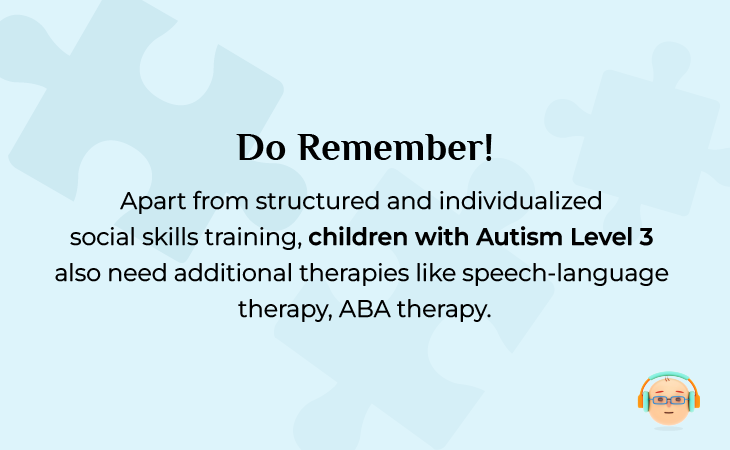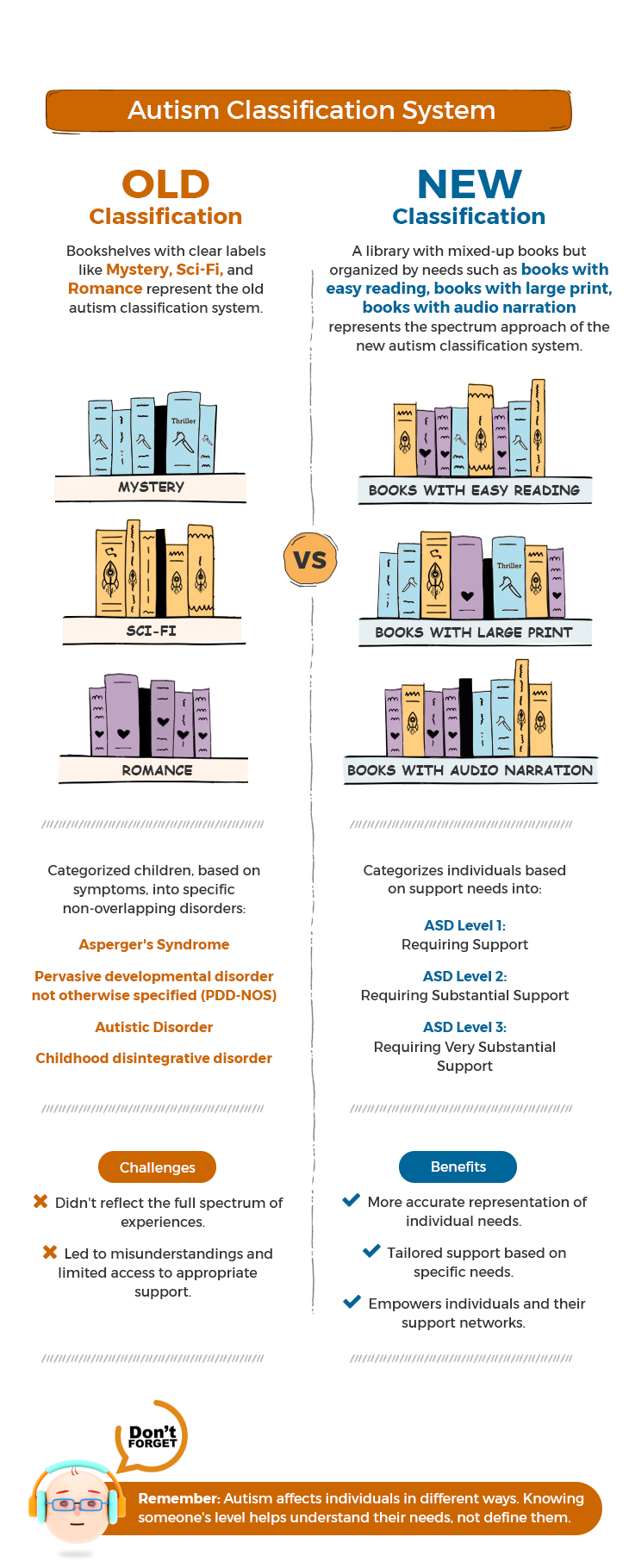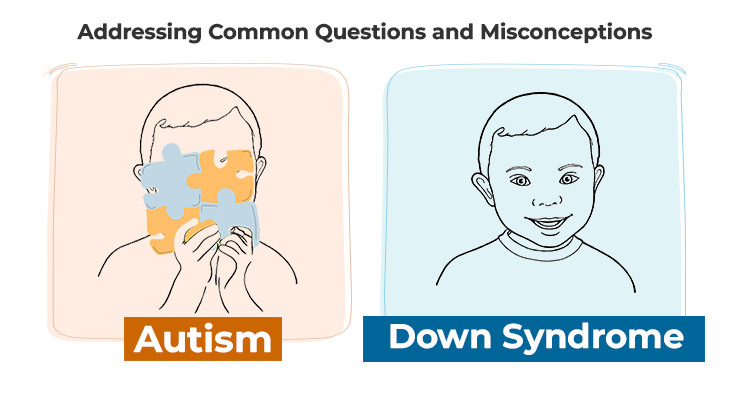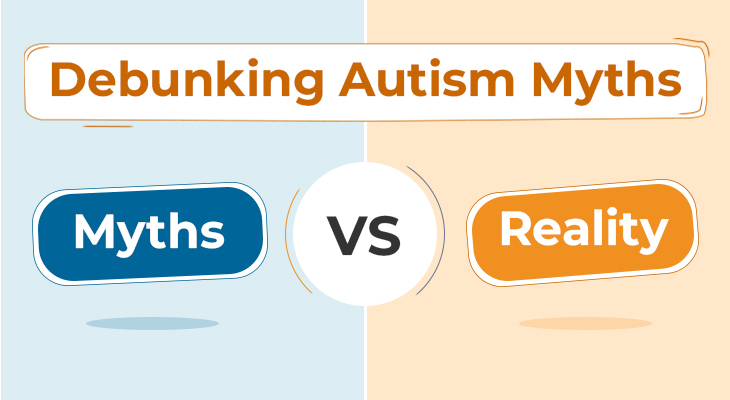Receiving a diagnosis, or even suspecting autism in your child, can be a whirlwind of emotions. Confusion, worry, even anger are all perfectly normal. You might wonder, “What does this mean for my child’s future?” or “Where do we even begin?”
One of the first things you might encounter as you navigate this new path is the concept of Autism Levels. There are 3 levels of Autism and this framework is used to describe the different levels of support your child may need in specific areas and find the best ways to empower them. Remember, these levels are not a measure of intelligence and they don’t define potential or predict the future.
This blog aims to provide a clear and reassuring explanation of Autism Levels empowering you to navigate this journey with your child.

Download Download & share this knowledge card in your network [Free Download]
Table of Contents
- Why is it important to understand the 3 levels of autism?
- What are the 3 levels of autism?
- Important: Misunderstandings of Autism Levels
- Who established the current system of classifying autism into 3 levels?
- What was the need to establish the new system of classifying autism?
- What is missing from ASD levels of support?
- Conclusion
- Did You Know About Folate Receptor Autoantibodies (FRAAs) and Brain Development?
- References
Why is it important to understand the 3 autism levels?
Some children with ASD demonstrate exceptional abilities in specific areas, performing complex tasks or excelling in particular subjects. Conversely, others might face intellectual challenges or even lack the ability to speak verbally. To address this spectrum of experiences and ensure appropriate support, the current system categorizes ASD into levels based on the level of support individuals require.
What are the 3 levels of autism?
The 3 levels of ASD are:
- ASD Level 1: Requiring Support
- ASD Level 2: Requiring Substantial Support
- ASD Level 3: Requiring Very Substantial Support
Here’s a breakdown of the 3 levels of autism with examples:
ASD Level 1: Requiring Support
Children with autism level 1 can often function independently in many settings.
What are the challenges faced by children with autism level 1?
- Social communication: Initiating and maintaining conversations, understanding social cues like facial expressions or sarcasm, using appropriate social language like greetings or farewells.
For example:
- A child at level 1 might find it difficult to join in group conversations with peers at recess.
- They might not understand how to initiate play or respond appropriately to jokes or teasing.
Do Remember!
With some support like social skills training, they can learn to navigate social situations more confidently.

Download Download & share this knowledge card in your network [Free Download]
ASD Level 2: Requiring Substantial Support
Children with autism level 2 may require significant support in some areas of daily life.
What are the challenges faced by children with autism level 2?
- Social communication: More significant challenges in social communication as described in Level 1
- Restricted interests: Intense focus on specific topics or activities, difficulty engaging in other activities.
- Repetitive behaviors: Repetitive movements like hand flapping, rocking, or lining up objects.
- Inflexibility to routine: Difficulty adapting to changes in routine or schedule.
For example:
- A teenager at level 2 might be deeply interested in dinosaurs and spend hours researching them. However, they might struggle to engage in conversations with classmates about other topics.
- They might dislike changes in their daily routine, like a different substitute teacher or a new route to school.
Do Remember!
Apart from structured and individualized social skills training, they also need additional therapies like speech-language therapy, ABA therapy.

Download Download & share this knowledge card in your network [Free Download]
ASD Level 3: Requiring Very Substantial Support
Children with Autism Level 3 may require very substantial support in most areas of daily life.
What are the challenges faced by children with autism level 3?
Children with autism level 3 face severe challenges in both social communication and restricted/repetitive behaviors, as mentioned below:
- Limited verbal communication: May rely on alternative communication methods like picture cards or sign language.
- Severe difficulty with social interaction: May avoid social interaction altogether or have difficulty understanding social cues even with support.
- Highly restricted interests and repetitive behaviors: These might significantly interfere with daily life and require significant support for daily activities.
For example:
- Children at autism level 3 might find it very difficult to communicate verbally and may rely on a communication device to express their needs.
- They might also have difficulty understanding social situations, making it challenging to build relationships with others.
- Daily activities like dressing or eating might be challenging without extensive support and structured routines.
Do Remember!
Highly individualized and intensive social skills training focusing on alternative or augmentative communication methods (e.g Sign language, picture cards etc.) is required here. Additional therapies like occupational therapy, speech-language training, ABA therapy become very crucial.

Download Download & share this knowledge card in your network [Free Download]
Important: Misunderstandings of Autism Levels
It’s important to remember that the levels are just one piece of the puzzle. Every autistic person is unique, and understanding their individual needs and strengths is crucial for effective support. Here’s what the ASD levels do not represent:
- They don’t reflect intelligence or potential: People at each level can have a wide range of intelligence and abilities. Focusing solely on the level can overshadow individual strengths and talents.
- They aren’t a measure of severity: While the levels generally correlate with the amount of support needed, they don’t represent a fixed scale of “severity” or “mildness.” Every child with autism experiences it differently.
- They aren’t fixed categories: Children may move between levels over time as their needs change and they receive support and interventions.
- They don’t predict future outcomes: The levels don’t predict what someone with autism will be able to achieve in life. With the right support and opportunities, children at any level can thrive and lead fulfilling lives.
Who established the current system of classifying autism into 3 levels?
The American Psychiatric Association (APA), through the Diagnostic and Statistical Manual of Mental Disorders, Fifth Edition (DSM-5), published in May 2013, categorized autism into 3 levels.
What was the need to establish the new system of classifying autism?
Imagine you have a library of books on a shelf. Back in the day, these books were organized with different labels: “Mystery,” “Sci-Fi,” and “Romance.” Each category held books with very specific themes. This was the old classification system for autism using terms like “Asperger’s syndrome” and “Autistic Disorder.”
However, people realized that not all books fit neatly into these categories. Some books had elements of two or even all three labels! This led to confusion and made it difficult to find the right book for someone’s specific interests. Similarly, the old autism classification system, with its rigid categories like Asperger’s syndrome and Autistic Disorder, didn’t accurately represent the wide spectrum of experiences people with autism have. For instance, someone might have social communication challenges like someone diagnosed with “Asperger’s syndrome,” but also display repetitive behaviors typically associated with “Autistic Disorder.” This inflexibility led to misunderstandings. People were often placed in rigid categories that didn’t reflect their individual strengths and needs. This could be frustrating and limited access to appropriate support.
So, the librarians decided to reorganize the books based on different needs. Now, there are sections like “Books with Easy Reading,” “Books with Large Print,” and “Books with Audio Narration.” This new classification system focuses on the level of support a reader might need to enjoy the book.
Similarly, in the new classification system, the three levels of autism (requiring support, substantial support, very substantial support) categorize children based on the level of support they need in daily life, not on rigid diagnostic labels, to ensure they can navigate their daily lives and reach their full potential.

Download Download & share this infograph card in your network [Free Download]
What are the limitations of classifying ASD levels of support?
The current system of classification also has limitations such as:
- Focus on levels over individuality: The system unintentionally shifts the focus away from understanding the unique individual and their specific needs and strengths. Over reliance on the levels can lead to stereotyping or overlooking individual capabilities.
- Lack of addressing co-occurring conditions: The levels primarily focus on social communication and repetitive behavior support needs. However, many children with ASD also experience co-occurring conditions like anxiety, depression, or other sensory processing difficulties. The current system doesn’t explicitly address the support needs related to these co-occurring conditions.
- Overlapping and Subjective Criteria: The criteria for each level can be subjective and overlap to some extent, which can lead to inconsistencies in diagnosis and access to support services.
Conclusion
Navigating a diagnosis of Autism Spectrum Disorder can be an emotional rollercoaster. However, understanding the three levels of support within the autism spectrum can be a powerful tool in empowering yourself and your child.
Remember, these levels are not labels or limitations, but rather guides to understanding individual needs and accessing appropriate support. Every autistic child is unique, with their own strengths, challenges, and potential. Focusing on their individual journey and fostering their unique abilities will pave the way for a fulfilling and successful life.
As a parent, you can empower your child by:
- Seeking professional guidance from qualified individuals like developmental pediatricians or therapists.
- Advocating for your child’s needs and ensuring they receive the appropriate support at home and school.
- Connecting with other parents facing similar journeys for support and information.




